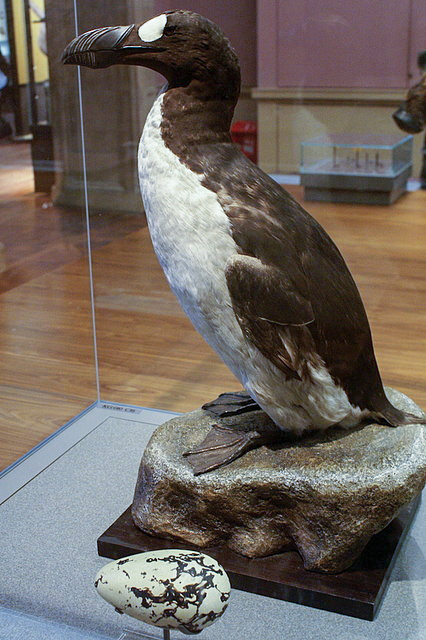The great auk (Pinguinus impennis), also known as the Penguin or gare-fowl, is a species of flightless alcid that became extinct in the mid-19th century. It was the only modern species in the genus Pinguinus. It is unrelated to the Penguins of the southern hemisphere, which were named so after their resemblance to the northern species.
…the auk foraged in the waters of the North Atlantic, ranging as far south as northern Spain and along the coastlines of Canada, Greenland, Iceland, the Faroe Islands, Norway, Ireland, and Great Britain.
Early European explorers to the Americas used the great auk as a convenient food source or as fishing bait, reducing its numbers. The bird’s down was in high demand in Europe, a factor that largely eliminated the European populations by the mid-16th century. Around the same time, nations such as Great Britain began to realize that the great auk was disappearing and it became the beneficiary of many early environmental laws, but despite that the great auk were still hunted.
Its growing rarity increased interest from European museums and private collectors in obtaining skins and eggs of the bird. On 3 June 1844, the last two confirmed specimens were killed on Eldey, off the coast of Iceland, ending the last known breeding attempt.
The word “penguin” first appears in the sixteenth century as a synonym for “great auk”.[20] Although the etymology is debated, the generic name “penguin” may be derived from the Welsh pen gwyn “white head”, either because the birds lived in New Brunswick on White Head Island (Pen Gwyn in Welsh) or because the great auk had such large white circles on its head. When European explorers discovered what today are known as penguins in the Southern Hemisphere, they noticed their similar appearance to the great auk and named them after this bird, although biologically, they are not closely related.[21]: 10



https://www.smithsonianmag.com/air-space-magazine/the-big-creek-missile-agency-85069719/